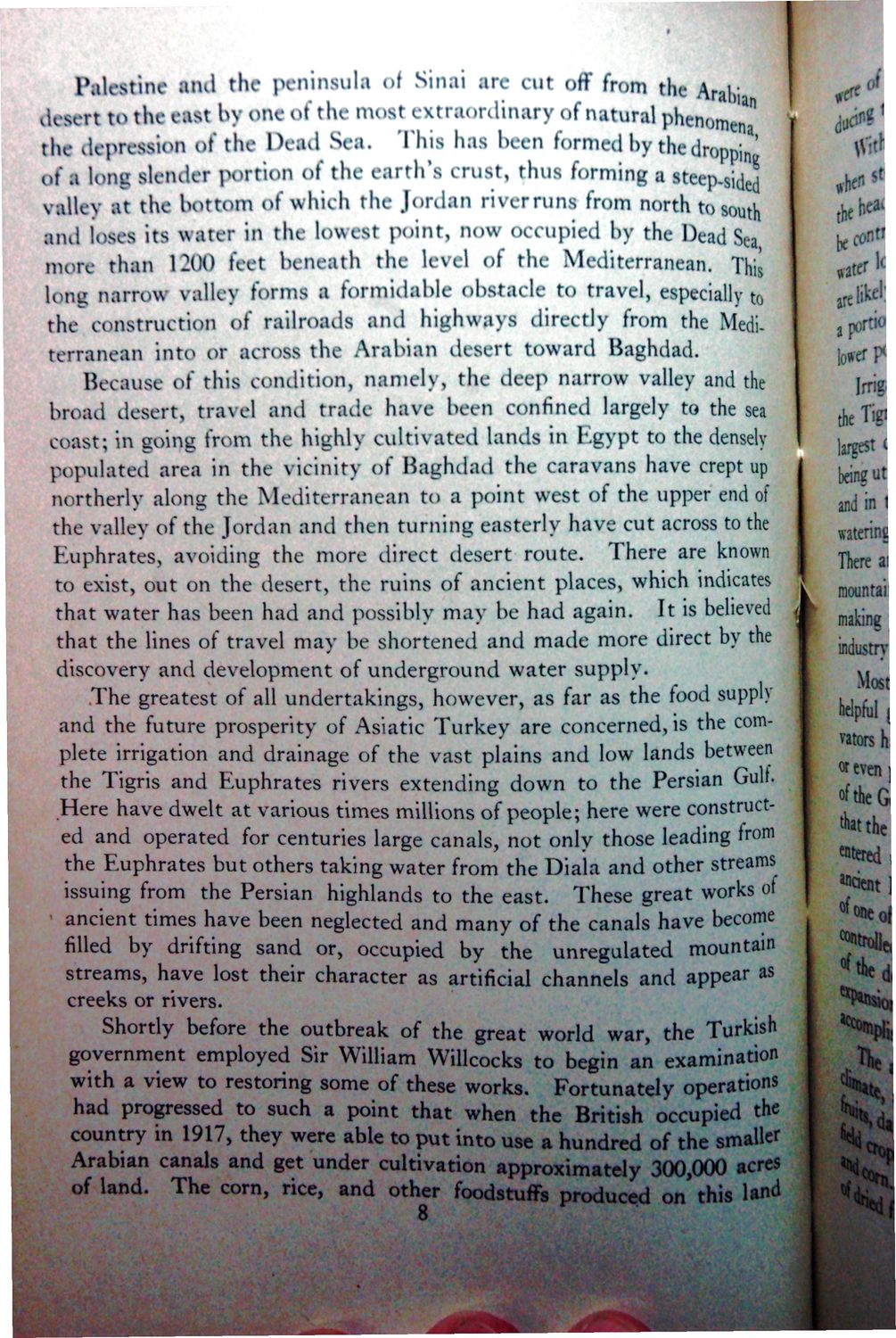| |
| |
Caption: War Publications - WWI Compilation 1923 - Article 23
This is a reduced-resolution page image for fast online browsing.

EXTRACTED TEXT FROM PAGE:
bv one of the the depression of the Dead Sea. This has been formed by thedropp',n' of a long slender portion of the earth's crust, thus forming a steep-sided vallev at the bottom of which the Jordan river runs from north to south and loses its water in the lowest point, now occupied by the Dead Sea more than 1200 feet beneath the level of the Mediterranean. This long narrow valley forms a formidable obstacle to travel, especially to the construction of railroads and highways directly from the Mediterranean into or across the Arabian desert toward Baghdad. Because of this condition, namely, the deep narrow valley and the broad desert, travel tad trade have been confined largely to the sea coast; in going from the highly cultivated lands in Kgypt to the densely populated area in the vicinity of Baghdad the caravans have crept up northerly along the Mediterranean to a point west of the upper end of the valley of the Jordan and then turning easterly have cut across to the Euphrates, avoiding the more direct desert route. There are known to exist, out on the desert, the ruins of ancient places, which indicates that water has been had and possibly may be had again. It is believed that the lines of travel may be shortened and made more direct by the discovery and development of underground water supply. The greatest of all undertakings, however, as far as the food supply and the future prosperity of Asiatic Turkey are concerned, is the complete irrigation and drainage of the vast plains and low lands between the Tigris and Euphrates rivers extending down to the Persian Gulf Here have dwelt at various times millions of people; here were constructed and operated for centuries large canals, not only those leading from the Euphrates but others taking water from the Diala and other streams issuing from the Persian highlands to the east. These great works of ancient times have been neglected and many of the canals have become filled by drifting sand or, occupied by the unregulated mountain streams, have lost their character as artificial channels and appear as creeks or rivers. Shortly before the outbreak of the great world war, the Turkish government employed Sir William Willcocks to begin an examination with a view to restoring some of these works. Fortunately operations had progressed to such a point that when the British occupied the country in 1917, they were able to put into use a hundred of the smallC Arabian canals and get under cultivation approximately 300,000 acres of land. The corn, rice, and other foodstuffs produced on this land Aral)i an •
| |